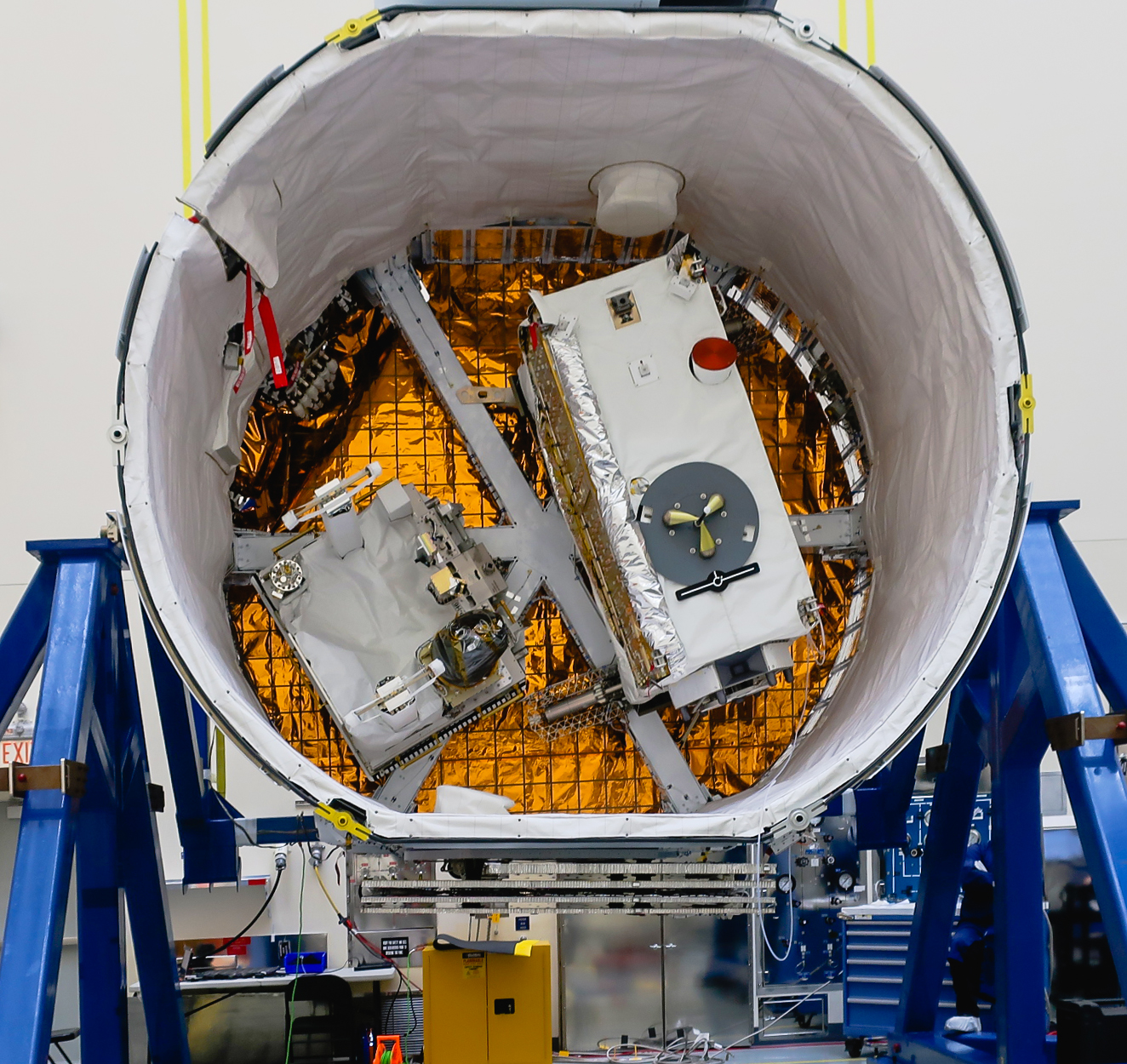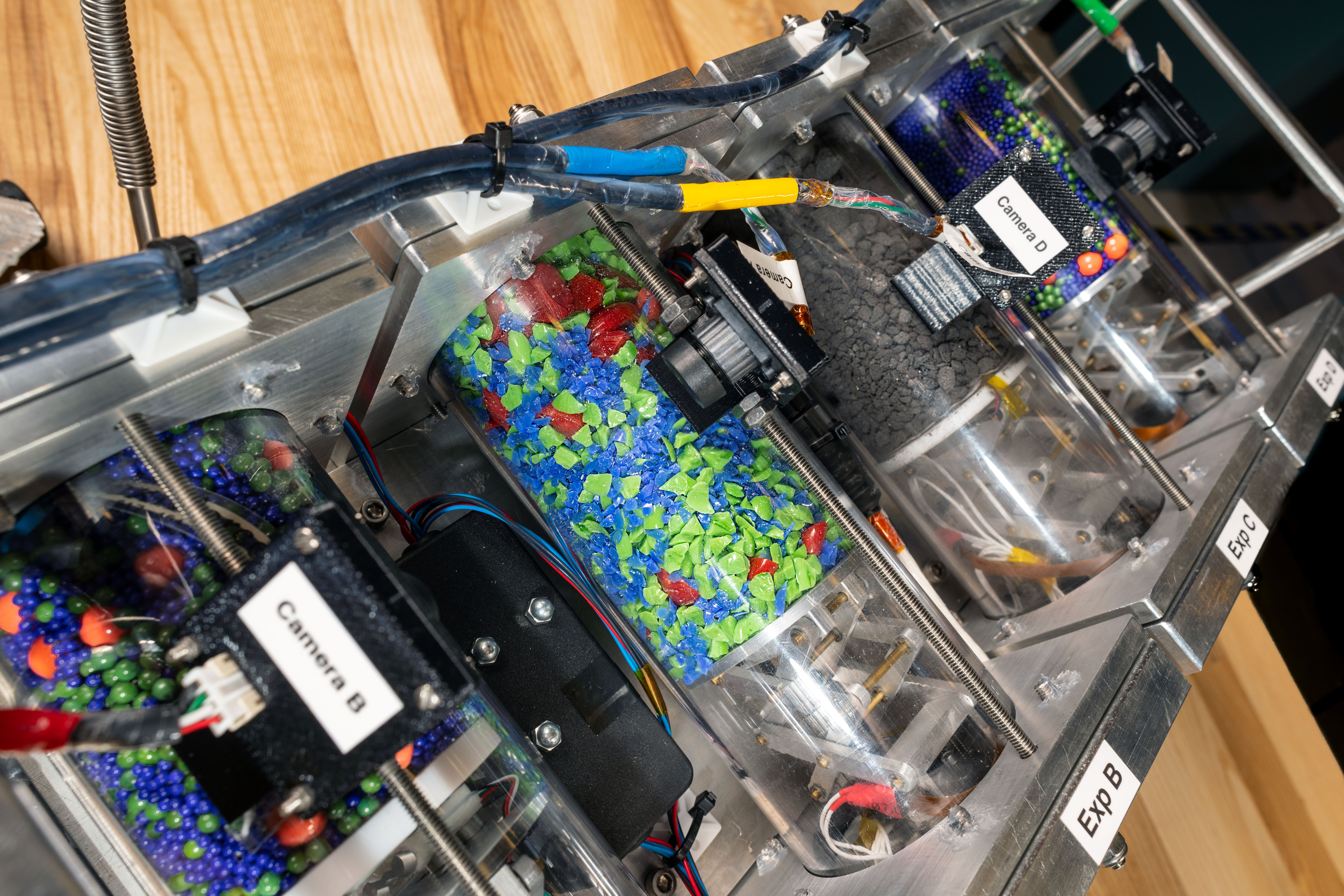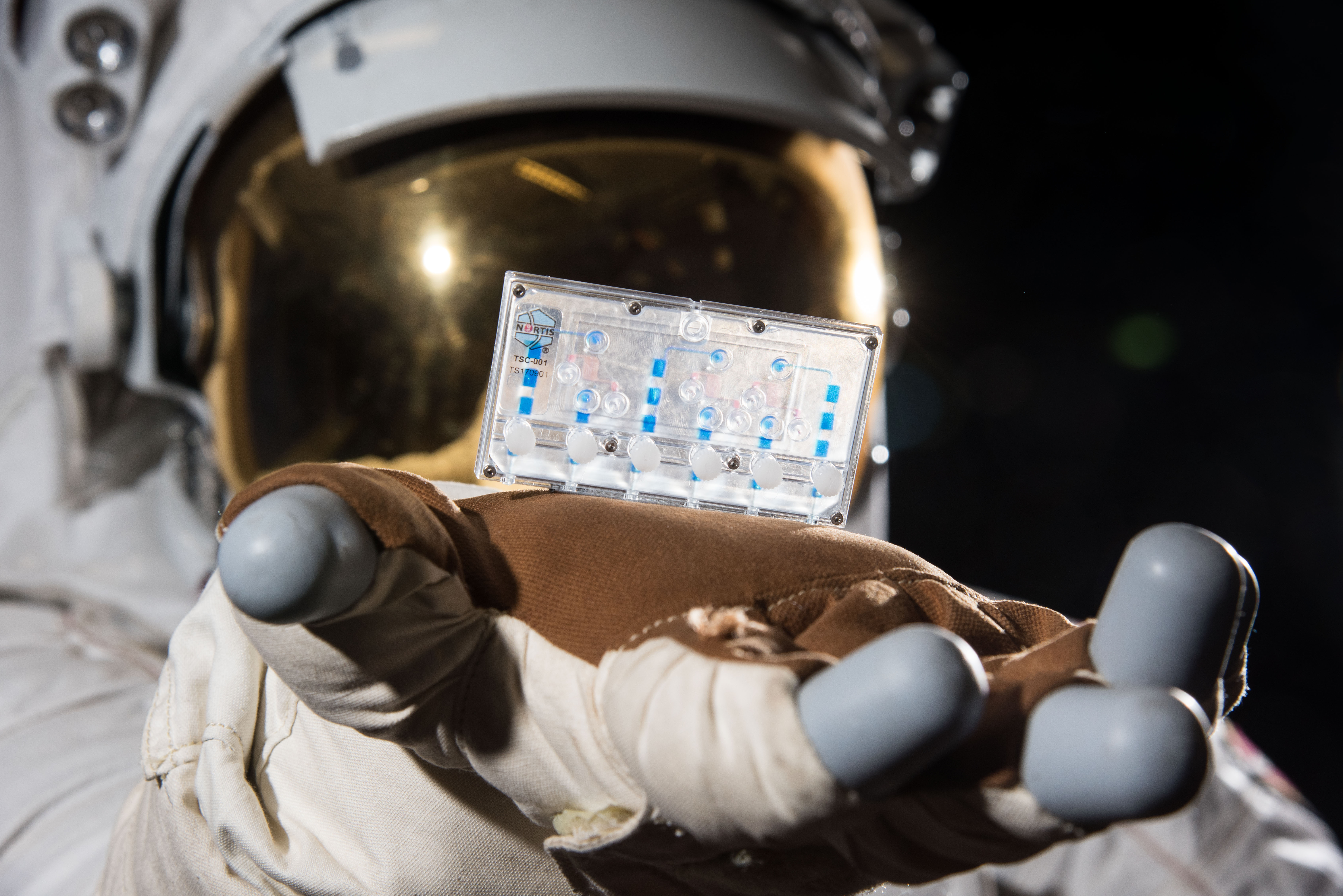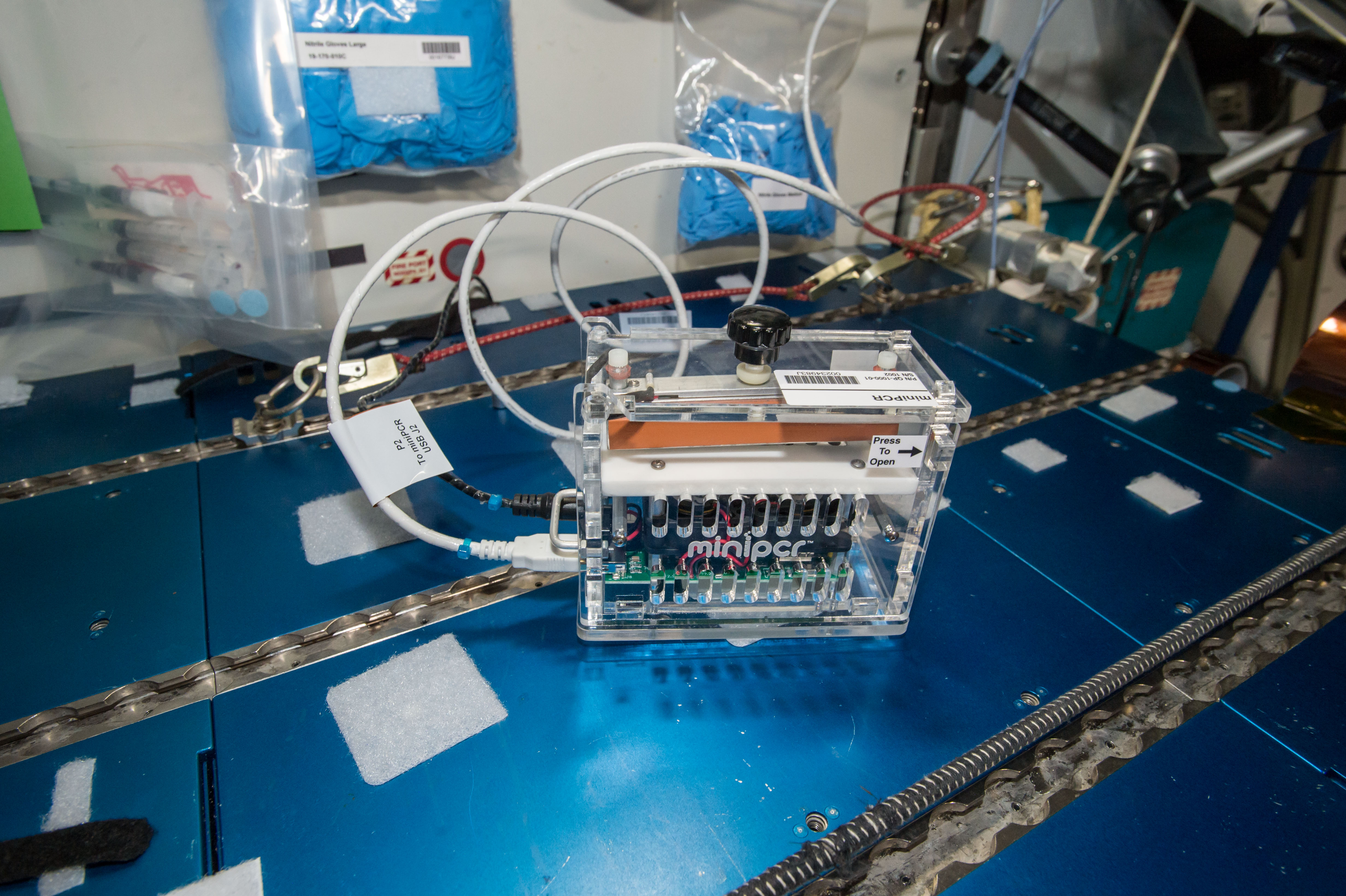Weird Science: Nanoparticles, Algae and Organs on Chips to Launch on SpaceX Dragon
Drug-carrying nanoparticles, an algae-powered bioreactor, a microgravity platform and a variety of "organs on a chip" will make the trip to the International Space Station Wednesday morning (May 1) on SpaceX's Dragon spacecraft.
The crew of the International Space Station is busy unpacking the tons of cargo carried by Northrop Grumman's Cygnus spacecraft last week, and they're preparing to snag a second haul. This one, on the Dragon, will bring more than 3,270 lbs. (1,691 kilograms) of science payloads among the other crew tools and supplies. When it leaves, the Dragon spacecraft will carry 2,269 lbs. (1,029 kg) of experiments back to Earth for analysis, NASA officials said during a news conference April 22.
The cargo launch, on SpaceX's Falcon 9 rocket, is set for 3:59 a.m. EDT (0759 GMT) on Tuesday from Cape Canaveral Air Force Station in Florida. You can watch the launch live online here at Space.com, courtesy of NASA.
Related: SpaceX Cargo Launch on Track Despite Crew Dragon Anomaly
"For this launch, there's a heavy emphasis on life science investigations that will be onboard the Dragon spacecraft," Marc Giulianotti, a scientist with the space station's U.S. national lab, said during the conference. "We have a unique mixture of partners on this mission, from a Fortune 500 biopharmaceutical company to innovative startups and academic institutions."
Mechanical and chemical systems currently generate oxygen and water and remove carbon dioxide on the space station, but someday, organic life could play a part, too. One new experiment going to the station on Dragon, the Photobioreactor, will test the cultivation of microalgae to someday serve as both food and a source of oxygen.
For this experiment, about 650 milliliters of algae in liquid will breathe carbon dioxide provided by astronauts, who will also occasionally add nutrients. Eventually, the astronauts will extract some algae from the device to send back to Earth for analysis.
Get the Space.com Newsletter
Breaking space news, the latest updates on rocket launches, skywatching events and more!
This test won't see algae make it to the crew's dinner plates, researchers said during the news conference. But a process used to dry and prepare algae on Earth, if adapted for space, could someday make algae a tasty treat for astronauts.

Just as algae could someday cycle carbon dioxide out of the space station's ecosystem in miniature, biomass on Earth stores and releases carbon dioxide on a massive scale. A new tool called the Orbiting Carbon Observatory-3 (OCO-3), which will attach to the outside of the space station, will measure atmospheric carbon dioxide and map sources and sinks of the gas.

Dragon will also bring an on-orbit facility called Hermes that will be able to run four experiments at a time for hours, days or months with video feedback, according to a statement from NASA. Hermes will be able to accomodate investigations into asteroid and comet formation, impact dynamics, and planetary evolution, researchers said in the statement.

Four experiments heading to the space station focus on tissue chips: little devices that grow human cells in a 3D matrix, allowing astronauts to monitor simulated organs' reactions in space.
"These are bioengineered, miniature devices that are about the size of, roughly, a USB key, and they recreate the structure and function of human organs and tissues in a very lifelike manner," Lucie Low, a researcher at the National Institutes of Health, said during the press conference. "They're essentially tools which can help us model different diseases and test the safety and efficacy of different drugs in a very realistic manner without actually testing these drugs in humans and in animals."
Researchers partnered with NASA to adapt tissue chips to be used in space, and this set will see a lung and bone marrow chip, a cartilage and bone chip, a chip that simulates the blood-brain barrier, and one that cultivates kidney cells.
While tissue chip technology is improving for use on Earth, the space station is a particularly good place for this type of research: "Microgravity causes changes in human health and physiology that look a lot like those that are associated with different kinds of aging," Low said. "You see things like bone and muscle mass loss, changes in the cardiovascular system, changes in the immune system.
"And we can actually use this kind of accelerated aging environment to help study diseases in microgravity in just a few weeks that could actually take years to study on Earth or to even become something that could be seen clinically," she added.

This cargo delivery will also include the latest stage in the student-designed Genes in Space mission, Genes in Space-6, which will track how yeast DNA broken using CRISPR-Cas9 gene editing repairs and mutates while in space. Another operation, by the drug company AstraZeneca, will practice manufacturing nanoparticles that could someday allow targeted drug delivery.
NASA is anticipating an uptick in science done on the station, now that astronaut Christina Koch has been assigned to stay on the space station for nearly a year, increasing the duration that there will be four NASA crewmembers on board.
"The additional fourth crewmember effectively doubles the amount of time we can dedicate to research," Jennifer Buckley, a scientist on the International Space Station program, said during the news conference.
- Genes in Space Student Experiment Probes Astronaut DNA
- Astronauts Identify Mystery Microbes in Space for the 1st Time
- Making Stuff in Space: Off-Earth Manufacturing Is Just Getting Started
Email Sarah Lewin at slewin@space.com or follow her @SarahExplains. Follow us on Twitter @Spacedotcom and on Facebook.
Join our Space Forums to keep talking space on the latest missions, night sky and more! And if you have a news tip, correction or comment, let us know at: community@space.com.

Sarah Lewin started writing for Space.com in June of 2015 as a Staff Writer and became Associate Editor in 2019 . Her work has been featured by Scientific American, IEEE Spectrum, Quanta Magazine, Wired, The Scientist, Science Friday and WGBH's Inside NOVA. Sarah has an MA from NYU's Science, Health and Environmental Reporting Program and an AB in mathematics from Brown University. When not writing, reading or thinking about space, Sarah enjoys musical theatre and mathematical papercraft. She is currently Assistant News Editor at Scientific American. You can follow her on Twitter @SarahExplains.









